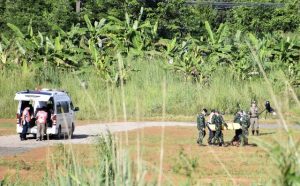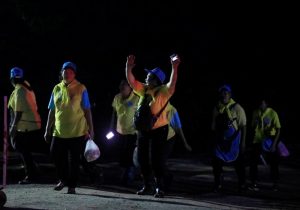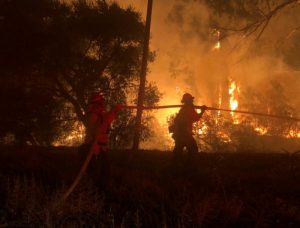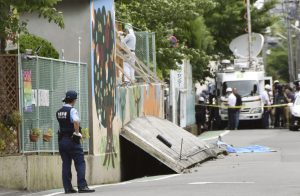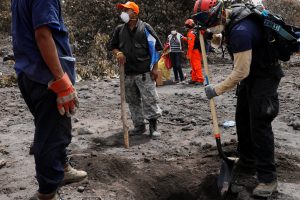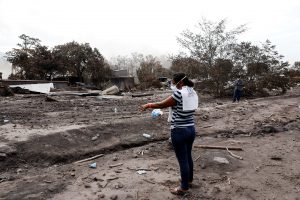
By Panu Wongcha-um and James Pomfret
CHIANG RAI, Thailand (Reuters) – Rescue workers in Thailand on Monday brought four boys out of a flooded cave where a 12-member soccer squad and their coach were trapped for more than two weeks, taking the total number rescued to eight.
A Reuters witness near the Tham Luang cave in the northern province of Chiang Rai saw medical personnel carrying four people out of the cave to waiting ambulances over the course of the day.
The rescue operation was launched on Sunday and four boys were brought out that day. They were in good condition in hospital, officials said.
“As of now, eight people have left the cave,” an official involved in the rescue operation told Reuters. The official declined to be identified as he is not authorized to speak to the media.
The Thai navy SEAL unit, which has been overseeing the rescue, later confirmed on its Facebook page that the total number of boys brought out was eight.
The “Wild Boars” soccer team and their coach got trapped on June 23 when they set out to explore the vast cave complex after soccer practice, when a rainy season downpour flooded the tunnels.
British divers found the 13, huddled on a muddy bank in a partly flooded chamber several kilometers inside the complex, on Monday last week.
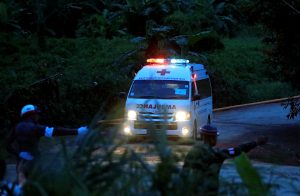
An ambulance leaves from Tham Luang cave complex in the northern province of Chiang Rai, Thailand, July 9, 2018. REUTERS/Soe Zeya Tun
The dangerous bid to rescue the boys – aged between 11 and 16 – got going again hours earlier on Monday after a break to replenish oxygen supplies and make other preparations deep inside the cave complex.
Authorities have said the mission could take three or four days to complete. It is a race against the clock with heavy rain expected in coming days, which would again dangerously flood the tunnels with fast flowing, and rising, water.
The rescue team went into the cave to resume the operation at 11 a.m. (0400 GMT), the chief of the rescue mission, Narongsak Osottanakorn, told a news conference earlier, adding he expected good news.
Thirteen foreign divers and five members of Thailand’s elite navy SEAL unit make up the main team guiding the boys to safety through narrow, submerged passageways that claimed the life of a former Thai navy diver on Friday.
Narongsak said that the “same multinational team” that went into the cave on Sunday to retrieve the first four boys was deployed on Monday.
He did not say how many boys the team hoped to bring out on Monday.

Narongsak Osottanakorn, former governor of Chiang Rai province and the head of the rescue mission, attends a news conference after resuming the mission to rescue a group of boys and their soccer coach trapped in a flooded cave, in the northern province of Chiang Rai, Thailand, July 9, 2018. REUTERS/Tyrone Siu
GOOD HEALTH
On Sunday, divers held the first four boys close to bring them out, and each had to wear an oxygen mask to enable normal breathing, authorities said.
Narongsak said rescuers had to tighten a guide rope as part of their preparations for the second phase of the rescue on Monday.
Interior Minister Anupong Paojinda told reporters the four boys rescued on Sunday were in good health in hospital but did not give details. There was no word on the condition of any of the people brought out on Monday.
Prime Minister Prayuth Chan-ocha went to the cave to inspect the rescue operation later on Monday, with navy rescuers giving him a rousing cheer.
The fate of the boys and their coach has gripped Thailand and drawn attention from around the world.
Authorities have not confirmed the identity of the first four boys rescued. Some of the boys’ parents told Reuters they had not been told who had been rescued and that they were not allowed to visit the hospital.
Narongsak said the rescued boys had not been identified out of respect for the families whose sons were still trapped, adding that the boys were being kept away from their parents due to fear of infection.
“The four children are well at Chiang Rai Prachanukroh hospital. But they still need to be kept away from their parents and others due to fear about infection,” he said.
Medical teams previously said concerns included hypothermia and an airborne lung infection known as “cave disease”, which is caused by bat and bird droppings.
Somboon Sompiangjai, 38, the father of one of the trapped boys, said parents were told by rescuers ahead of Sunday’s operation the “strongest children” would be brought out first.
“We have not been told which child has been brought out … We can’t visit our boys in hospital because they need to be monitored for 48 hours,” Somboon told Reuters.
“I’m hoping for good news,” he said.
The cave complex is off-limits during the rainy season, which usually runs from May to October, when downpours can quickly flood it.
Relatives said the boys had been inside the labyrinthine complex during the dry season.
The president of soccer’s governing body, FIFA, has invited the boys to the World Cup final in Moscow on Sunday if they make it out in time.
(Reporting by Panu Wongcha-um, Patpicha Tanakasempipat, John Geddie and James Pomfret in CHIANG RAI; Additional reporting by Amy Sawitta Lefevre, Panarat Thepgumpanat, Pracha Hariraksapitak, and Aukkarapon Niyomyat in BANGKOK; Writing by John Geddie; Editing by Amy Sawitta Lefevre, Robert Birsel)



